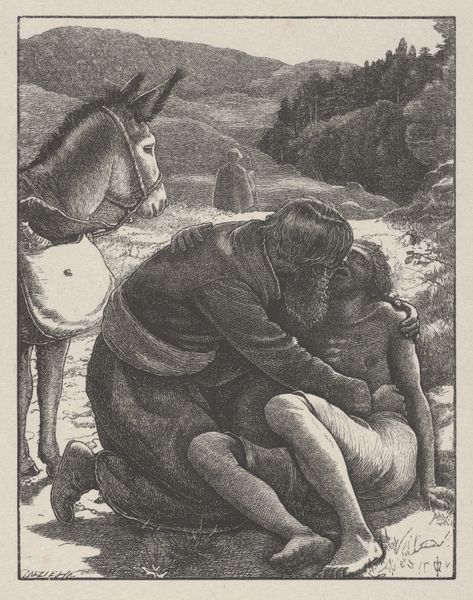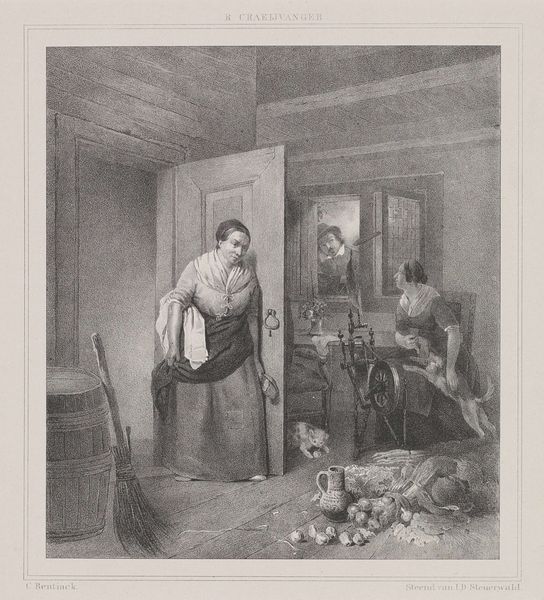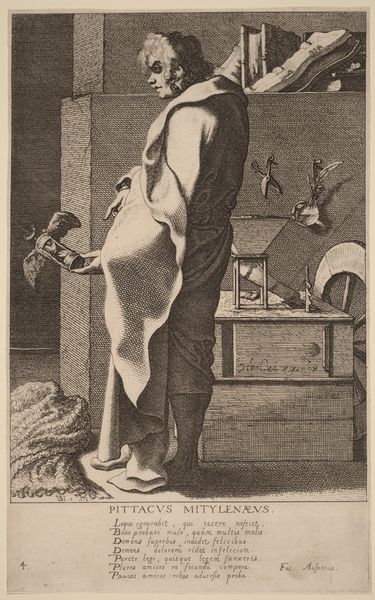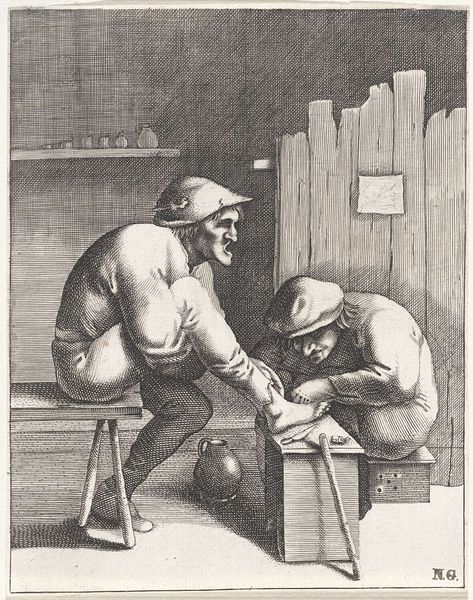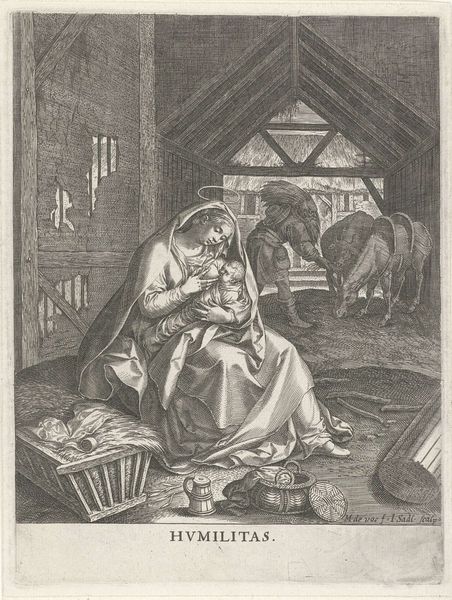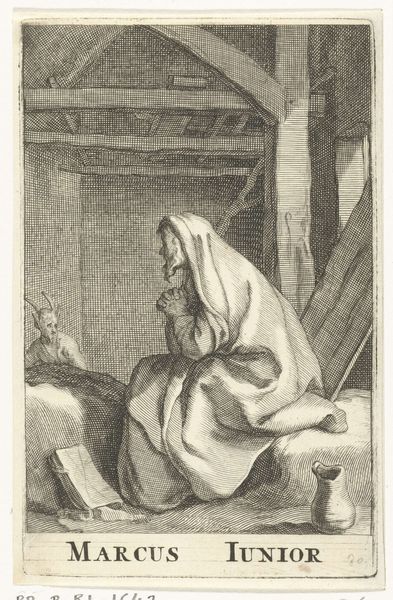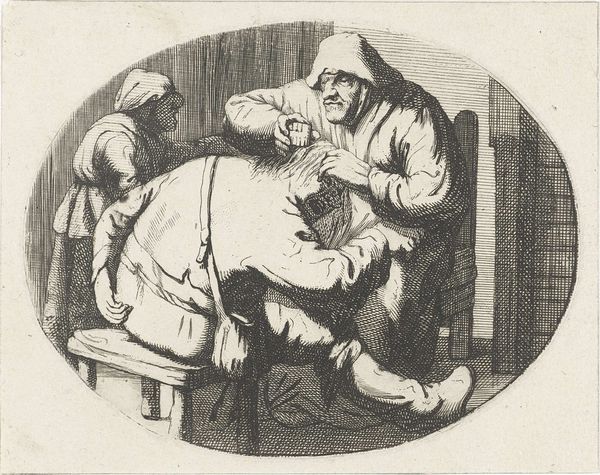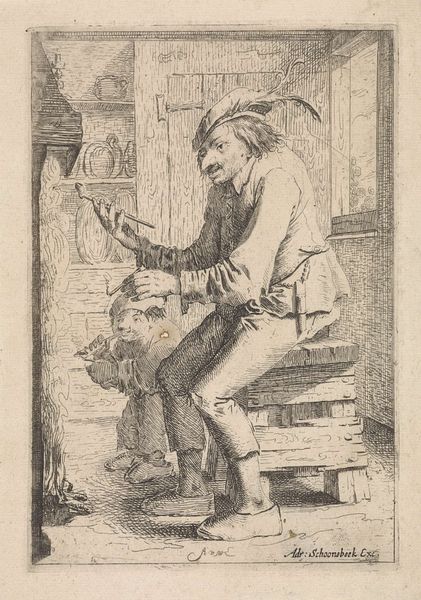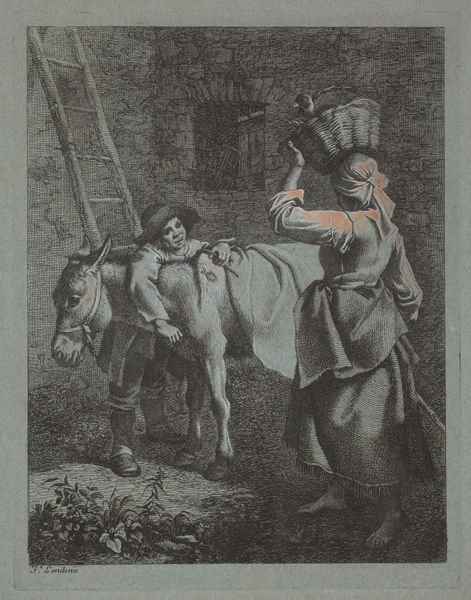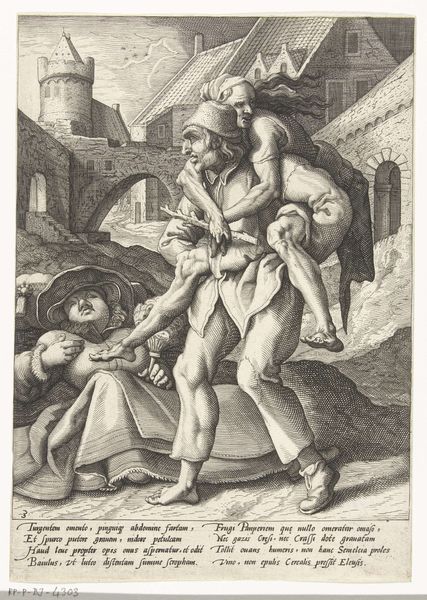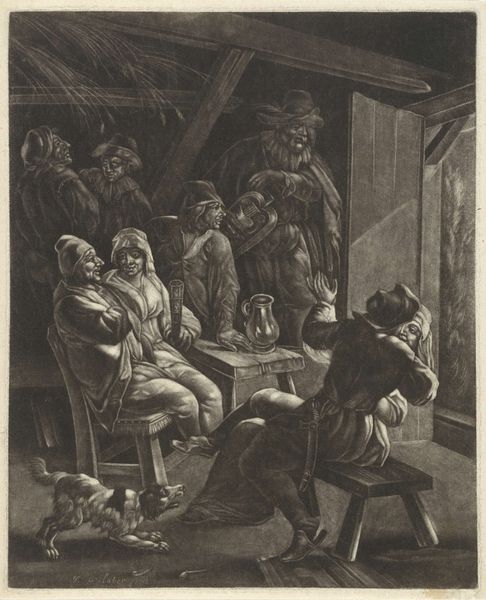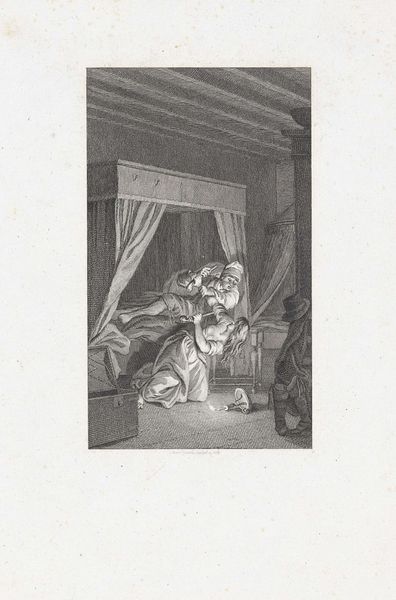
drawing, print, pencil
#
drawing
# print
#
landscape
#
pencil drawing
#
pencil
#
surrealism
#
genre-painting
#
history-painting
#
realism
Dimensions: image: 365 x 289 mm sheet: 576 x 405 mm
Copyright: National Gallery of Art: CC0 1.0
Editor: Here we have Julia Rogers' pencil drawing "Blacksmith," created sometime between 1935 and 1943. There's a certain stillness to it, despite the activity depicted. It's almost like a photograph documenting an everyday moment, with such detailed shading. How would you interpret this work, considering its historical context? Curator: Given the timeframe, I see it as a glimpse into the vanishing rural landscape in America. The New Deal art projects were actively promoting idealized depictions of American workers and the dignity of labor during this period of immense economic change. Rogers depicts this image through a kind of historical lens even during this period. Editor: You mentioned the "dignity of labor." Is that why the blacksmith and his horse seem almost monumental, dominating the composition? Curator: Precisely. But it goes beyond mere dignity. Think about the rise of industrialization. This drawing becomes a statement about the value of traditional skills. Rogers seems to place the labour within the framework of modernization - a subtle contrast to the window that reveals what appears to be buildings, or industrialisation perhaps replacing this trade with machine made components. Does the image portray reverence, resistance, or perhaps even resignation in the face of societal change? Editor: It’s thought-provoking how Rogers’ composition creates a dialogue between past and future within a single image. Perhaps it highlights a transition, not just for the blacksmith, but for America itself? Curator: Precisely! By understanding the cultural currents of the time, we can interpret this seemingly simple scene as a complex meditation on labor, progress, and the changing American identity. Thanks for pointing that out! Editor: That’s great. Thank you! I've certainly learned a lot from your insightful perspective.
Comments
No comments
Be the first to comment and join the conversation on the ultimate creative platform.
